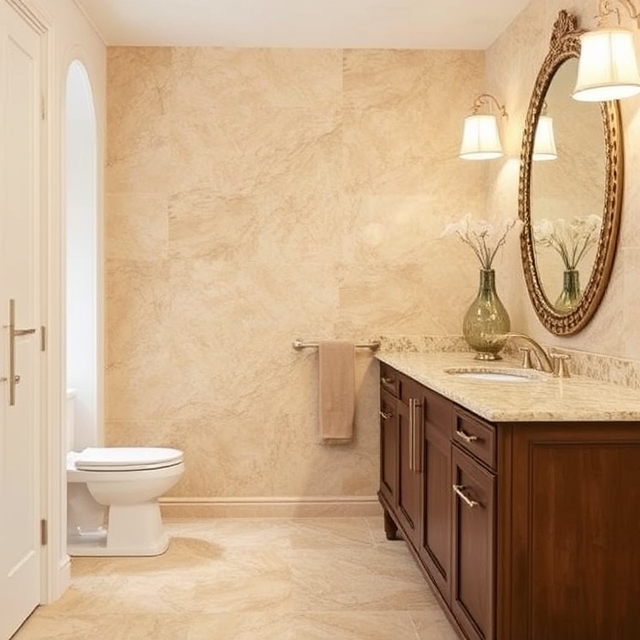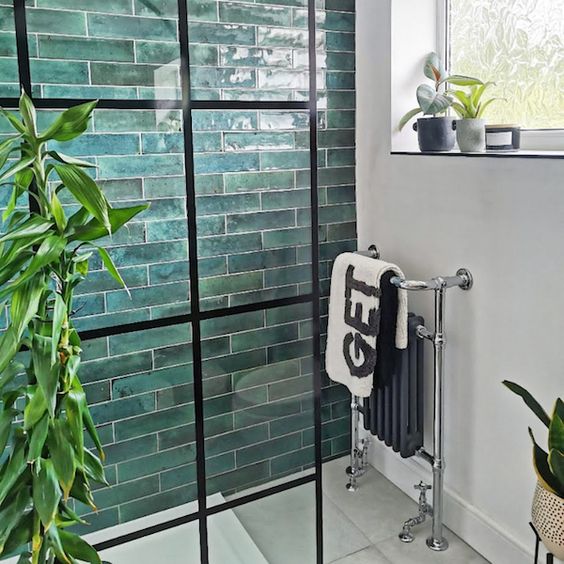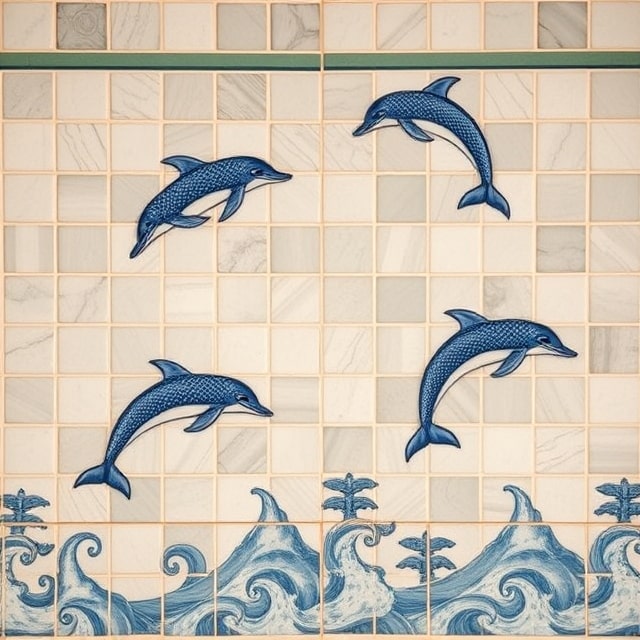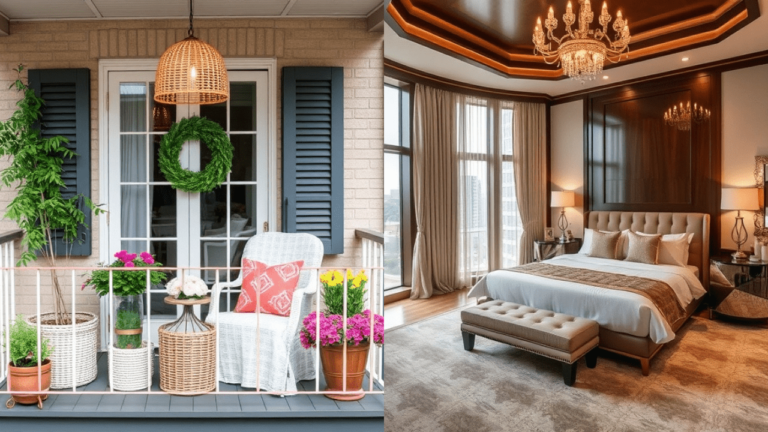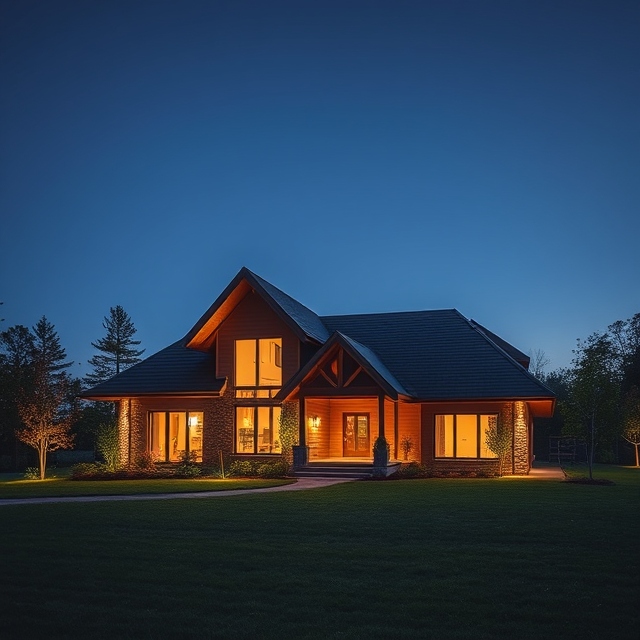Travertine Tiles: A Timeless Choice for Elegant Spaces
Travertine tiles have been a preferred building material for centuries, cherished for their natural beauty, durability, and versatility. Formed from limestone deposits in mineral hot springs, travertine is a type of sedimentary rock known for its distinctive veining and warm earth tones. It has been used in iconic structures such as the Colosseum in Rome, showcasing its enduring appeal and strength.
In modern architecture and interior design, travertine tiles are a popular choice for both residential and commercial spaces. They offer a luxurious, timeless look that complements a wide range of design aesthetics, from traditional to contemporary. This article explores the benefits, types, applications, and care tips for travertine tiles, providing a comprehensive guide for anyone considering this elegant material for their project.
What Are Travertine Tiles?
Travertine is a natural stone formed when mineral-rich waters, often from hot springs, evaporate and leave behind limestone deposits. Over time, this process creates a stone characterized by unique patterns, pitted surfaces, and a variety of earthy hues such as beige, tan, cream, and silver. The stone is quarried, cut, and polished into tiles for use in construction and interior design.
Travertine tiles are available in various finishes, including polished, honed, brushed, and tumbled, allowing homeowners and designers to achieve a variety of looks. Their organic texture and subtle color variations make them a preferred choice for those seeking a sophisticated yet natural aesthetic.
Benefits of Travertine Tiles
1. Aesthetic Appeal
Travertine tiles exude natural elegance with their unique patterns and soft, neutral tones. They bring warmth and a sense of luxury to any space, making them ideal for creating visually appealing interiors and exteriors.
2. Durability
Travertine is a durable material that can withstand high traffic and extreme weather conditions, making it suitable for indoor and outdoor applications. With proper care, travertine tiles can last for decades, maintaining their beauty over time.
3. Versatility
Travertine tiles are available in a wide range of sizes, finishes, and colors, allowing them to fit seamlessly into different design styles. Whether used for flooring, walls, or countertops, they adapt to various design themes, from rustic to modern.
4. Eco-Friendly
Travertine is a natural stone, making it an environmentally friendly option compared to synthetic materials. Its production has a lower environmental impact, especially when sourced responsibly.
5. Heat Resistance
Travertine tiles are excellent for areas exposed to heat, such as patios, pool decks, and outdoor kitchens. They remain cool underfoot even in hot weather, providing comfort and safety.
6. Easy Repair
Unlike synthetic materials, travertine can be repaired if damaged. Chips or cracks can often be filled with matching grout or epoxy, restoring the tile’s appearance.
Types of Travertine Tile Finishes
Travertine tiles come in several finishes, each offering a distinct look and feel:
1. Polished
Polished travertine tiles have a shiny, reflective surface that enhances their color and veining. This finish is ideal for creating a luxurious and sophisticated atmosphere, often used in formal living areas and bathrooms.
2. Honed
Honed travertine tiles have a smooth, matte surface that offers a more subdued appearance. This finish is popular for its modern, understated elegance and is suitable for both floors and walls.
3. Brushed
Brushed travertine tiles have a textured surface created by brushing the stone with wire brushes. This finish gives a rustic, natural look, perfect for outdoor areas and spaces with a casual aesthetic.
4. Tumbled
Tumbled travertine tiles are treated to create rounded edges and a slightly rough surface, giving them a weathered, antique appearance. They are often used for decorative accents, backsplashes, and mosaics.
5. Chiseled Edge
Chiseled-edge travertine tiles have irregular, hand-chipped edges that add a rugged, old-world charm. They are popular for flooring and wall applications in traditional or rustic designs.
Applications of Travertine Tiles
Travertine tiles are highly versatile and can be used in a variety of settings:
1. Flooring
Travertine tiles are a popular choice for flooring due to their durability and aesthetic appeal. They are commonly used in living rooms, kitchens, hallways, and bathrooms. The natural tones and patterns add warmth and elegance to any space.
2. Bathrooms
Travertine tiles are a classic choice for bathroom floors, walls, and showers. Their natural look creates a spa-like ambiance, while their non-slip finishes, such as honed or tumbled, enhance safety in wet areas.
3. Kitchens
Travertine tiles are ideal for kitchen backsplashes, countertops, and floors. They add a touch of sophistication to the space while being durable enough to withstand daily use.
4. Outdoor Spaces
Travertine tiles are a popular choice for patios, pool decks, and garden pathways. Their heat resistance and non-slip properties make them safe and comfortable for outdoor use.
5. Fireplaces
Travertine tiles can be used to clad fireplaces, adding a touch of elegance and warmth to the hearth. The stone’s natural beauty enhances the cozy feel of the space.
6. Accent Walls
Travertine tiles can be used to create stunning accent walls, bringing texture and visual interest to living rooms, dining areas, and entryways.
Travertine Tiles vs. Other Natural Stones
Travertine tiles have unique qualities that set them apart from other natural stones like marble, granite, and limestone:
- Appearance: Travertine has a more rustic and natural look compared to the refined elegance of marble and the dramatic patterns of granite.
- Porosity: Travertine is more porous than marble or granite, requiring sealing to prevent staining.
- Durability: While travertine is durable, it is softer than marble and granite, making it more susceptible to scratches and chips.
- Cost: Travertine tiles are generally more affordable than marble and granite, offering a cost-effective option for natural stone enthusiasts.
Caring for Travertine Tiles
To keep travertine tiles looking their best, follow these care tips:
1. Sealing
Travertine is a porous material, making it prone to staining if left unsealed. Apply a high-quality stone sealer during installation and reapply it periodically to maintain protection.
2. Cleaning
Use a mild, pH-neutral cleaner to clean travertine tiles. Avoid acidic or abrasive cleaners that can damage the stone’s surface.
3. Preventing Scratches
Place mats or rugs in high-traffic areas to prevent scratches from dirt and debris. Use felt pads under furniture to protect the tiles from damage.
4. Handling Spills
Wipe up spills immediately to prevent staining. This is especially important for liquids like wine, coffee, and citrus juices.
Design Ideas with Travertine Tiles
1. Rustic Charm
Combine tumbled travertine tiles with wooden furniture and earthy tones to create a rustic, cozy atmosphere in living rooms and kitchens.
2. Modern Minimalism
Use honed or polished travertine tiles in neutral shades for a sleek, minimalist look. Pair them with modern fixtures and monochromatic color schemes for a contemporary vibe.
3. Mediterranean Elegance
Create a Mediterranean-inspired space with chiseled-edge travertine tiles in warm hues like beige and cream. Add wrought iron accents and terracotta elements for an authentic touch.
4. Outdoor Retreat
Design an inviting outdoor space with brushed travertine tiles on patios or pool decks. Complement the tiles with lush greenery and comfortable seating for a relaxing retreat.
Conclusion
Travertine tiles are a timeless and versatile choice for enhancing both interior and exterior spaces. Their natural beauty, durability, and wide range of finishes make them suitable for various applications, from luxurious bathrooms to rustic outdoor patios. With proper care and thoughtful design, travertine tiles can elevate the aesthetic appeal of any space while providing a durable and eco-friendly flooring or wall solution. Whether you’re drawn to their historical charm or modern adaptability, travertine tiles remain a classic choice for elegant living.
Read more:

